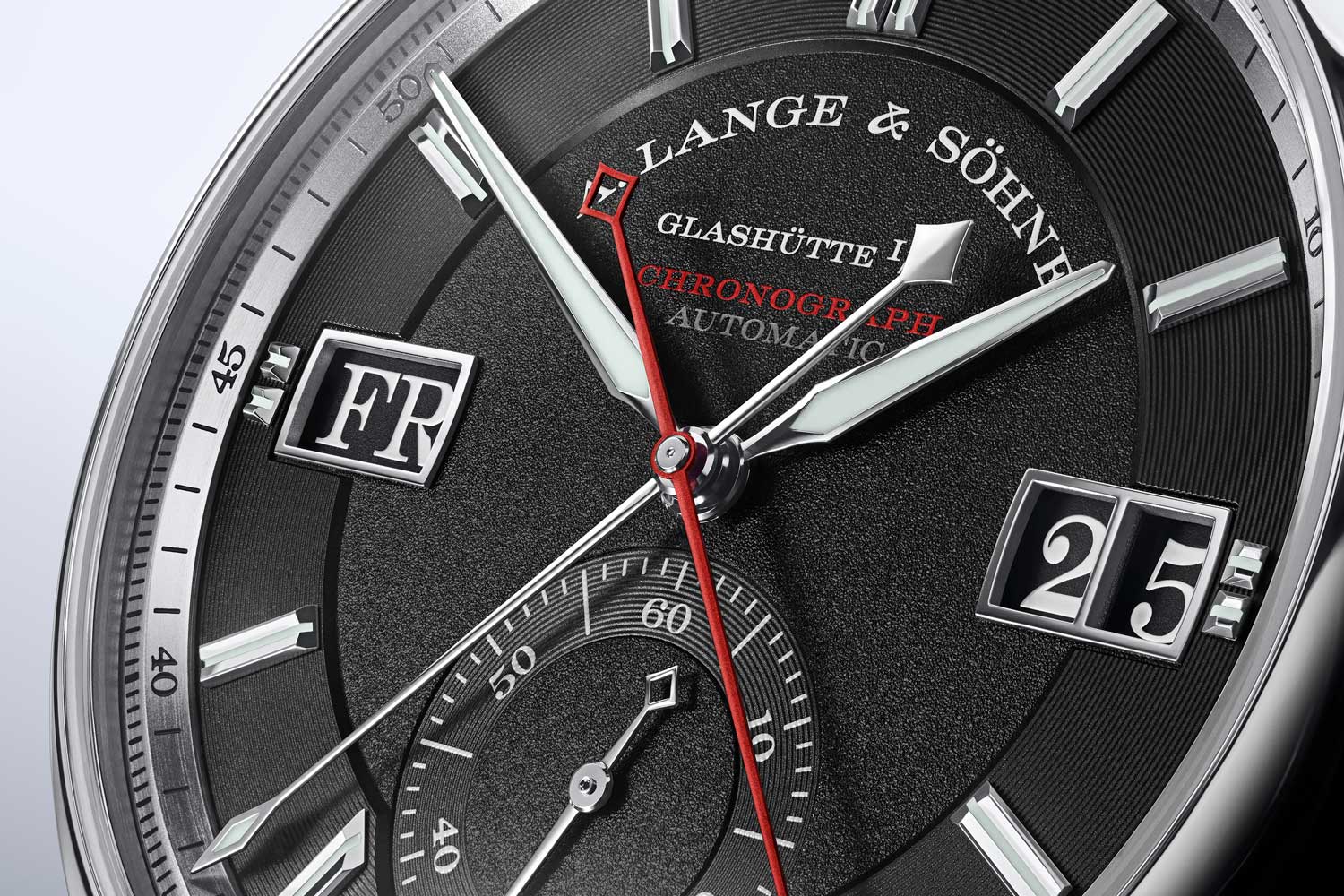A. Lange & Söhne
Introducing the A. Lange & Söhne Odysseus Chronograph

A very considered and considerate use of dial space in the A. Lange & Söhne Odysseus Chronograph
Studied Small Steps
The just-add-water approach of creating a chronograph would likely see additional counters on the dial, as well as extra pushers to work the chronograph. That is not the case here. Indeed, the dial is very little changed from the three-hand model, yet A. Lange & Söhne has worked a very practical chronograph into the mix, by adding two centrally-mounted hands for elapsed minutes and seconds, respectively, with the latter adding a pop of colour and distinction in flaming red. It’s a shame that centrally mounted chronograph hands aren’t as prevalent as they used to be, squinting at a 30-minute counter is not the most intuitive, and very hard work. On the Odysseus Chronograph, the entire dial is utilized for time-telling and chronograph readings, made yet easier with the hands extending to within a hair’s breadth of the scale on the flange, which separates the whole-minute markings from the fractional seconds. Very considerate.
The Odysseus Chronograph is boutique-only, in a limited edition of 100 pieces.
Tech Specs
A. Lange & Söhne Odysseus Chronograph
Movement: Self-winding L156.1 Datomatic, unidirectional winding central rotor with platinum mass, balance bridge, power reserve of 50 hours
Functions: Hours, minutes, small seconds, day, date; chronograph with central seconds and minutes
Case: 42.5mm x 14.2mm; stainless steel; display back; water resistant to 120m
Strap: Stainless steel bracelet with precision adjustment mechanism
Availability: Boutique exclusive, limited edition of 100 pieces










